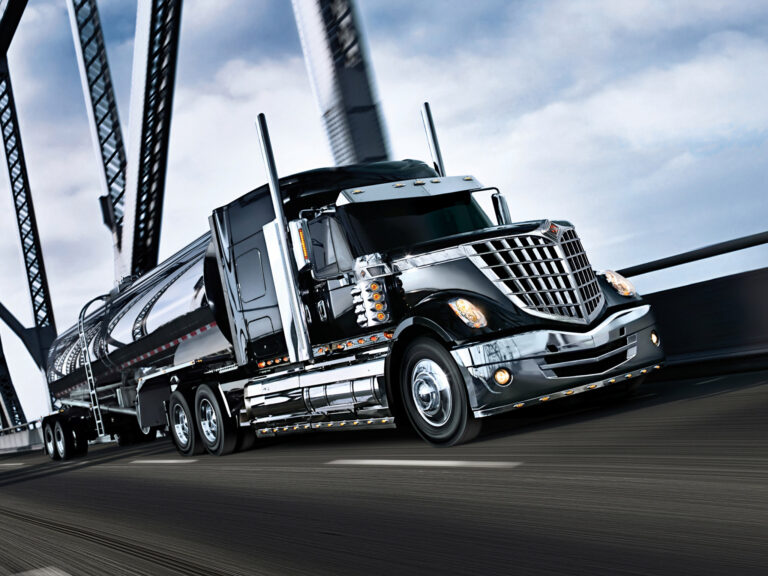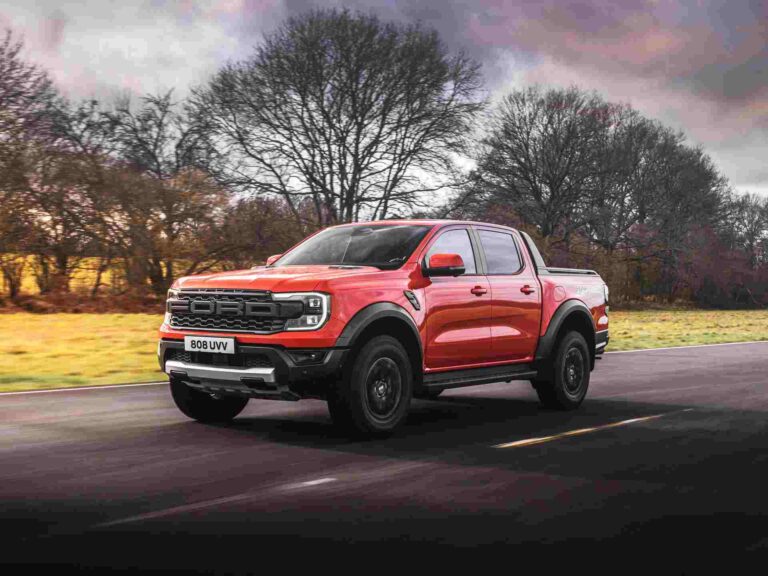1920s Car Brands: The Roaring Twenties and the Automotive Revolution
1920s Car Brands: The Roaring Twenties and the Automotive Revolution cars.truckstrend.com
The 1920s, often dubbed the "Roaring Twenties," was a decade of unprecedented economic prosperity, cultural transformation, and technological innovation. Amidst jazz music, flapper fashion, and the burgeoning consumer culture, the automobile emerged from a luxury novelty to a symbol of freedom, status, and progress. This period witnessed an explosion in car brands, each vying for a share of the rapidly expanding market, pushing the boundaries of design, engineering, and mass production. Understanding the landscape of 1920s car brands is not just a journey into automotive history; it’s a deep dive into the very fabric of modern industrialization, marketing, and the consumer dream. From the ubiquitous Ford Model T to the opulent Duesenberg, the cars of this era laid the foundation for the automotive industry we know today, shaping transportation, urban planning, and societal norms forever.
The Titans of Mass Production: Ford and General Motors
1920s Car Brands: The Roaring Twenties and the Automotive Revolution
The story of 1920s car brands cannot begin without acknowledging the revolutionary impact of mass production, spearheaded by two American giants: Ford Motor Company and the rapidly expanding General Motors.
Ford’s Dominance: The Model T and Assembly Line
Henry Ford’s Model T was more than just a car; it was an industrial phenomenon. By perfecting the moving assembly line and standardizing components, Ford dramatically reduced production costs, making the automobile accessible to the average American family. In 1920, a Model T cost around $395, a price that would drop further throughout the decade. Its rugged simplicity, ease of repair, and affordability made it the best-selling car in the world for much of the decade. Ford’s focus was on a single, reliable product, available in "any color so long as it is black," embodying efficiency and utilitarianism. By the mid-1920s, over half of all cars on American roads were Model Ts, solidifying Ford’s position as the dominant force in the industry.
GM’s Multi-Brand Strategy: Chevrolet, Buick, Cadillac, Oldsmobile
While Ford championed the "one size fits all" approach, General Motors, under the visionary leadership of Alfred P. Sloan Jr., adopted a revolutionary multi-brand strategy. Sloan recognized that as incomes rose, consumers would desire more choice, luxury, and features. GM offered a "car for every purse and purpose," with distinct brands catering to different market segments:
- Chevrolet: Directly competing with the Model T, offering more style and features at a slightly higher price point, eventually surpassing the Model T in sales by the late 1920s with models like the "Superior" and "National."
- Oldsmobile: A mid-range brand, known for innovation and reliability.
- Buick: Positioned as an upscale brand, offering comfort and power for the aspiring middle class.
- Cadillac: The pinnacle of GM’s offerings, representing luxury, sophistication, and advanced engineering, attracting the wealthiest clientele.
This strategy of planned obsolescence, annual model changes, and diverse offerings proved incredibly successful, laying the groundwork for modern automotive marketing and consumer segmentation.

Luxury, Innovation, and Exclusivity: The Independent Icons

Beyond the mass-produced vehicles, the 1920s was a golden age for independent luxury and performance car manufacturers. These brands catered to an elite clientele, focusing on unparalleled craftsmanship, bespoke design, and cutting-edge engineering.
Packard: "Ask the Man Who Owns One"
Packard was arguably the most prestigious American luxury car manufacturer of the era. Known for its impeccable build quality, refined engineering, and elegant styling, Packard vehicles were a status symbol for the wealthy. Models like the Twin Six and the Super Eight were celebrated for their smooth-running engines and luxurious interiors. Packard’s marketing slogan, "Ask the Man Who Owns One," underscored the brand’s confidence in its reputation and customer loyalty.
Duesenberg: The Ultimate Status Symbol
For the truly affluent, Duesenberg represented the zenith of American automotive engineering and artistry. Founded by brothers Fred and August Duesenberg, their cars were renowned for their powerful engines, advanced chassis designs, and custom coachwork. The Model J, introduced in 1928, was an engineering marvel, boasting a magnificent straight-eight engine producing 265 horsepower – an astonishing figure for its time. Each Duesenberg was a unique masterpiece, often costing more than a typical family home, making it the ultimate symbol of wealth and extravagance during the Jazz Age.

Pierce-Arrow, Auburn, Cord: Engineering and Artistry
- Pierce-Arrow: Hailing from Buffalo, New York, Pierce-Arrow was another top-tier luxury brand, recognized for its distinctive headlights integrated into the fenders and its quiet, powerful engines. Like Packard, it appealed to the conservative elite.
- Auburn: Known for its stylish designs and relatively more accessible luxury, Auburn offered a range of attractive cars that blended performance with flair, particularly popular in the latter half of the decade.
- Cord: A brand that truly pushed the boundaries of automotive design and engineering. Cord cars, particularly the L-29 introduced in 1929, were groundbreaking for their front-wheel-drive layout and sleek, low-slung profiles, making them look unlike anything else on the road.
European Elegance and Engineering Prowess
While American manufacturers dominated in volume and mass production, European car brands carved out their niche through exquisite craftsmanship, racing prowess, and distinct national design philosophies.
- Rolls-Royce & Bentley (Britain): These British marques epitomized bespoke luxury and engineering excellence. Rolls-Royce, with its "Spirit of Ecstasy" mascot and silent, powerful engines, built cars of unparalleled refinement. Bentley, famous for its racing victories at Le Mans, offered high-performance luxury cars that combined speed with opulence.
- Bugatti (France): Ettore Bugatti’s creations were works of art on wheels. Known for their intricate engineering, beautiful aesthetics, and incredible performance, Bugatti cars like the Type 35 (a dominant race car) and the luxurious Type 41 "Royale" (one of the largest and most expensive cars ever built) were symbols of French automotive artistry and speed.
- Mercedes-Benz (Germany): Formed from the merger of Daimler and Benz in 1926, Mercedes-Benz quickly established itself as a leader in automotive technology and luxury. Their cars, like the S, SS, and SSK models, were powerful, well-engineered, and often victorious in motorsport, laying the groundwork for their legendary reputation.
Pioneering Technology: Defining the Modern Automobile
The 1920s wasn’t just about more cars; it was about better cars. The decade saw a rapid acceleration in technological innovation that fundamentally transformed the driving experience and laid the groundwork for modern automotive features.
- From Cranks to Push Buttons: Electric Starters and Lights: While Cadillac introduced the electric self-starter in 1912, it became commonplace in the 1920s, eliminating the dangerous and cumbersome hand crank. Integrated electric lighting also became standard, significantly improving safety for night driving.
- Safety and Comfort: Four-Wheel Brakes and Enclosed Bodies: Mechanical four-wheel brakes, initially seen on luxury cars, gradually became more common, offering vastly improved stopping power over the traditional rear-wheel-only systems. Perhaps the most significant change for the average driver was the shift from open-top touring cars to enclosed sedan and coupe bodies. These offered protection from the elements, greater comfort, and a quieter ride, quickly becoming the preferred style by the end of the decade.
- Transmission and Tires: Smoother Rides and Easier Driving: Synchromesh transmissions, which made gear changes much smoother and easier, began to appear, reducing the need for double-clutching. Balloon tires, with their lower air pressure and larger volume, provided a significantly softer and more comfortable ride compared to earlier high-pressure tires, absorbing road shocks more effectively.
The Shifting Sands: Challenges, Consolidation, and the Great Depression
Despite the boom, the 1920s also saw the beginning of significant challenges for the automotive industry, foreshadowing the massive consolidation that would occur in subsequent decades.
Intense Competition and Market Saturation
The sheer number of car manufacturers (hundreds at the beginning of the decade) led to fierce competition. As the market matured and initial demand for basic transportation was met, companies needed to innovate more rapidly, offer more features, and compete on price and style.
The Impact of the Economic Downturn
The stock market crash of 1929 and the ensuing Great Depression delivered a devastating blow to the automotive industry. Consumer spending plummeted, and luxury car markets virtually evaporated overnight. This economic crisis accelerated the demise of many smaller and independent manufacturers.
Survival of the Fittest: The Decline of Independent Makers
Companies that lacked the financial resources for continuous innovation, the production efficiency for competitive pricing, or the marketing savvy to adapt to changing consumer tastes struggled. Many, like Marmon, Locomobile, and National, disappeared entirely or were absorbed by larger corporations. Only those with deep pockets, strong market share, or a highly specialized niche (like Rolls-Royce) managed to weather the storm.
The Enduring Legacy: Collecting and Appreciation
The cars of the 1920s are more than just historical artifacts; they are tangible links to a pivotal era. For enthusiasts and collectors, they offer a unique window into a time of incredible innovation and style.
For the Collector: Research and Restoration
Collecting 1920s cars requires dedication. Authentic examples of luxury brands are rare and command high prices. Researching specific models, understanding their mechanical intricacies, and sourcing original parts are crucial for proper restoration. Many independent marques have dedicated clubs and communities that provide invaluable support and knowledge.
Understanding Automotive History
Studying 1920s car brands provides insights into the evolution of engineering, industrial design, and marketing. It highlights the transition from artisanal production to mass manufacturing, the birth of brand identity, and the profound societal impact of personal transportation. These vehicles remind us of a time when the automobile was still a new and exciting marvel, shaping the world around it.
Table: Representative 1920s Car Brands & New Prices (circa 1925)
Note: Prices are highly approximate and varied significantly by specific model, trim, and year. These represent the new car purchase price in the 1920s USD and are not current collector values.
| Brand | Key Models / Characteristics | Representative New Price Range (1920s USD) | Key Market Segment / Feature |
|---|---|---|---|
| Ford | Model T, Model A (late 20s) – Utilitarian, mass-produced | $290 – $700 | Entry-level, affordable, mass-market pioneer |
| Chevrolet | Superior, National – Stylish alternative to Model T | $500 – $800 | Mid-range, accessible, styling-focused |
| Buick | Standard Six, Master Six – Reliable, comfortable | $1,200 – $2,000 | Upper-mid-range, family luxury |
| Oldsmobile | Six, F-Series – Innovative features, good value | $1,000 – $1,500 | Mid-range, reliable |
| Cadillac | V-63, La Salle (late 20s) – American luxury and prestige | $3,000 – $5,000+ | High-end luxury, technological leader (e.g., V8 engines) |
| Packard | Single Six, Twin Six, Super Eight – Premier American luxury | $3,500 – $7,000+ | Elite luxury, superior craftsmanship |
| Duesenberg | Model A, Model J (late 20s) – Ultra-luxury, bespoke | $8,500 – $25,000+ (Model J) | Ultra-exclusive, performance luxury, custom coachwork |
| Pierce-Arrow | Series 33, 80 – Distinctive, conservative luxury | $3,000 – $6,000+ | High-end luxury, traditional elegance |
| Auburn | 6-51, 8-88 – Stylish, performance-oriented luxury | $1,000 – $2,500 | Accessible luxury, design focus |
| Cord | L-29 (late 20s) – Innovative, front-wheel drive | $3,000 – $3,500 | Innovative design, performance, unique engineering |
| Rolls-Royce | Phantom, Twenty – British bespoke luxury | $8,000 – $15,000+ | Ultimate luxury, hand-built, refined |
| Bentley | 3 Litre, 4½ Litre – Performance luxury, racing heritage | $5,000 – $10,000+ | High-performance luxury, racing pedigree |
| Bugatti | Type 35, Type 41 Royale – Artistic, performance, ultra-rare | $3,000 – $40,000+ (Royale) | Artistic design, racing prowess, extreme exclusivity |
| Mercedes-Benz | S, SS, SSK – German engineering, performance | $5,000 – $10,000+ | High-performance luxury, racing success |
Frequently Asked Questions (FAQ)
Q1: What was the most popular car brand in the 1920s?
A1: Ford was the most dominant car brand for the majority of the 1920s, primarily due to the immense popularity and affordability of the Model T. However, by the late 1920s, Chevrolet began to outsell the Model T as consumers desired more style and features.
Q2: How much did cars cost in the 1920s?
A2: Car prices varied dramatically. A basic Ford Model T could be purchased for as little as $290 (by 1927), making it accessible to many working-class families. Mid-range cars like Chevrolets or Dodges were typically in the $500-$1,000 range. Luxury vehicles from brands like Packard, Cadillac, or Pierce-Arrow could cost $3,000-$7,000, while ultra-exclusive cars like a Duesenberg Model J could easily exceed $15,000-$25,000, equivalent to several hundred thousand dollars in today’s money.
Q3: What were the major technological advancements in 1920s cars?
A3: Key advancements included the widespread adoption of electric self-starters (eliminating hand cranking), four-wheel mechanical brakes, balloon tires for a smoother ride, and the significant shift from open-top vehicles to comfortable, enclosed sedan and coupe body styles. Synchromesh transmissions also began to appear, making gear changes easier.
Q4: Why did so many car brands disappear after the 1920s?
A4: The 1920s saw hundreds of car manufacturers, leading to intense competition. Many smaller brands lacked the capital for continuous innovation, efficient mass production, or robust marketing. The onset of the Great Depression in 1929 delivered a fatal blow to many of these companies, as consumer demand plummeted, forcing consolidation and the survival of only the largest or most specialized firms.
Q5: Were there electric cars in the 1920s?
A5: Yes, electric cars existed and were somewhat popular in the early 1900s, especially for urban use due to their quietness and ease of operation (no hand cranking or gear shifting). However, by the 1920s, advancements in gasoline engine technology (electric starters, more powerful engines), the discovery of vast oil reserves, and the increasing demand for longer-range travel led to the rapid decline of electric vehicles, which couldn’t match the range or refueling speed of gasoline cars.
Conclusion: The Roaring Twenties – A Foundation for Automotive Future
The 1920s stands as a seminal decade in automotive history. It was a period of explosive growth, radical innovation, and profound societal change, largely driven by the automobile. From Henry Ford’s relentless pursuit of efficiency to General Motors’ pioneering multi-brand strategy, and the independent luxury marques pushing the boundaries of design and performance, the car brands of this era shaped not only how we travel but also how industries operate and how consumers interact with products. While many names faded into history, their contributions – whether in mass production techniques, marketing strategies, or technological breakthroughs – laid the essential groundwork for the modern automotive industry. The cars of the Roaring Twenties remain a testament to human ingenuity, ambition, and the enduring allure of the open road.





